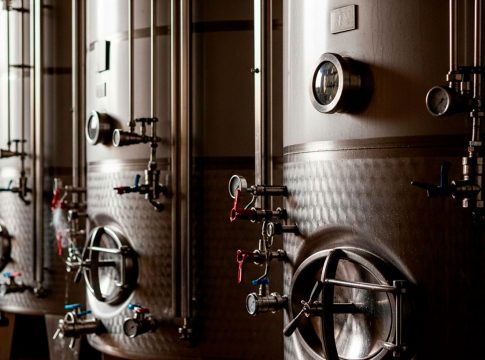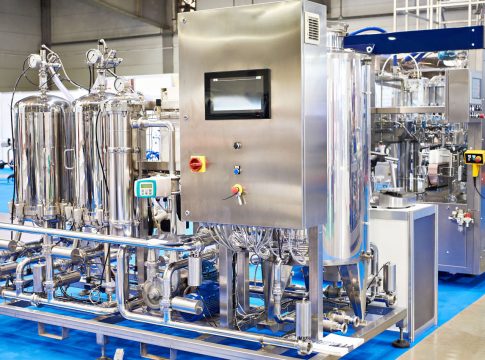
Data la grande diversità chimica dei composti azotati dell’uva che possono essere assimilati dai lieviti – tra cui, oltre all’ammonio e aminoacidi, anche ammidi, purine, pirimidine, vitamine e peptidi – la misura dell’APA rappresenta una sfida. Molti sono i metodi analitici a disposizione, spesso tuttavia dispendiosi in termini di costi e tempi, oltre che di difficile applicazione. In cantina, però, c’è la necessità di monitorare il contenuto in APA del mosto per verificare le eventuali carenze e di ripristinare il contenuto in azoto assimilabile necessario per un corretto svolgimento della fermentazione alcolica, mantenendo bassi i costi ed i tempi di esecuzione. Lo scopo di questo lavoro è stato quello di misurare l’apporto in APA che diversi attivanti del commercio possono fornire se aggiunti al mosto in fermentazione, utilizzando una metodologia che si basa su una lettura fotometrica, facile e sicura, che può essere tranquillamente svolta in cantina.
L’ARTICOLO COMPLETO A FIRMA ALESSANDRA RINALDI E LUIGI MOIO E’ PUBBLICATO A PAGINA 24 DEL FASCICOLO 5/2017 DI VVQ. PER ACCEDERE ALLA RIVISTA ONLINE E’ NECESSARIO ESSERE ABBONATI.
VAI ALLA PAGINA DEGLI ABBONAMENTI
PER APPROFONDIRE (Approfondimenti a cura degli Autori)
Bibliografia
- Becchetti, (1988). Metodi di analisi dei vini. Gibertini Elettronica, III edizione pp. 162-163.
- Bell, S. J., & Henschke, P. A. (2005). Implications of nitrogen nutrition for grapes, fermentation and wine. Australian Journal of Grape and Wine Research, 11(3), 242-295.
- Beltran, G., Esteve-Zarzoso, B., Rozès, N., Mas, A., & Guillamón, J. M. (2005). Influence of the timing of nitrogen additions during synthetic grape must fermentations on fermentation kinetics and nitrogen consumption. Journal of Agricultural and Food Chemistry, 53(4), 996-1002.
- Bely, M., Rinaldi, A., & Dubourdieu, D. (2003). Influence of assimilable nitrogen on volatile acidity production by Saccharomyces cerevisiae during high sugar fermentation. Journal of Bioscience and Bioengineering, 96(6), 507-512.
- Bely, M., Sablayrolles, J. M., & Barre, P. (1990). Automatic detection of assimilable nitrogen deficiencies during alcoholic fermentation in oenological conditions. Journal of Fermentation and Bioengineering, 70(4), 246-252.
- Bisson, L. F. (1991). Influence of nitrogen on yeast and fermentation of grapes. In Proceedings of the International Symposium on Nitrogen in Grapes and Wine: Seattle, Washington, Usa 18-19 June 1991 (pp. 78-89). American Society for Enology and Viticulture, ASEV.
- Chatonnet, P., Dubourdie, D., Boidron, J. N., & Pons, M. (1992). The origin of ethylphenols in wines. Journal of the Science of Food and Agriculture, 60(2), 165-178.
- Cooper, T. G. (1982). Nitrogen metabolism in Saccharomyces cerevisiae. Cold Spring Harbor Monograph Archive, 11, 39-99.
- Delas J., 1993. Nutrition azotée, composition des baies et des moûts. Progrés Agricole et Viticole, vol.110, n°6, 139-142.
- Dukes, B. C., & Butzke, C. E. (1998). Rapid determination of primary amino acids in grape juice using an o-phthaldialdehyde/N-acetyl-L-cysteine spectrophotometric assay. American Journal of Enology and Viticulture, 49(2), 125-134.
- Hebbard, S., Goodman, K., & Jin, H. (1993). Chemical analysis of ammonium and amino acids in Chardonnay juices. Grapegrower Winemaker, 353, 19-21.
- Henschke, P. A. (1997). Stuck fermentation: causes, prevention and cure. In Advances in juice clarification and yeast inoculation (Vol. 41, pp. 30-38).
- Henschke, P. A., & Jiranek, V. (1993). Yeasts-metabolism of nitrogen compounds. Wine Microbiology and Biotechnology, 77-164.
- Ingledew, W. M., Magnus, C. A., & Sosulski, F. W. (1987). Influence of oxygen on proline utilization during the wine fermentation. American Journal of Enology and Viticulture, 38(3), 246-248.
- Jiranek, V., Langridge, P., & Henschke, P. A. (1995). Amino acid and ammonium utilization by Saccharomyces cerevisiae wine yeasts from a chemically defined medium. American Journal of Enology and Viticulture, 46(1), 75-83.
- Kliewer, W. M. (1970). Free amino acids and other nitrogenous fractions in wine grapes. Journal of Food Science, 35(1), 17-21.
- Lambrechts, M. G., & Pretorius, I. S. (2000). Yeast and its importance to wine aroma.
- Large, P. J. (1986). Degradation of organic nitrogen compounds by yeasts. Yeast, 2(1), 1-34.
- Lie, S. (1973). The EBC‐ninhydrin method for determination of free alpha amino nitrogen. Journal of the Institute of Brewing, 79(1), 37-41.
- Monteiro, F. F., & Bisson, L. F. (1991). Amino acid utilization and urea formation during vinification fermentations. American Journal of Enology and Viticulture, 42(3), 199-208.
- Nicolini, G., Versini, G., Corradin, L., Larcher, R., Beretta, C., Olivari, A., & Eccli, E. (2004). Measurement of promptly assimilable nitrogen by yeast in grape juices and application examples. Rivista di Viticoltura e di Enologia, 57(1/2), 13.
- OIV (2016). International code of œnological practices. 2016 issue. Paris (France).
- Ough, C. S. (1968). Proline content of grapes and wines. Vitis, 7(3).
- Ough, C. S., & Amerine, M. A. (1988). Methods for analysis of musts and wines. Wiley.
- Ough, C. S., Crowell, E. A., & Mooney, L. A. (1988). Formation of ethyl carbamate precursors during grape juice (Chardonnay) fermentation. I. Addition of amino acids, urea, and ammonia: Effects of fortification on intracellular and extracellular precursors. American Journal of Enology and Viticulture, 39(3), 243-249.
- Sanders, E. M., & Ough, C. S. (1985). Determination of free amino acids in wine by HPLC. American Journal of Enology and Vticulture, 36(1), 43-46.
- Stines, A. P., Grubb, J., Gockowiak, H., Henschke, P. A., Høj, P. B., & Heeswijck, R. V. (2000). Proline and arginine accumulation in developing berries of Vitis vinifera in Australian vineyards: Influence of vine cultivar, berry maturity and tissue type. Australian Journal of Grape and Wine Research, 6(2), 150-158.
- Watson, T. G. (1976). Amino-acid pool composition of Saccharomyces cerevisiae as a function of growth rate and amino-acid nitrogen source. Microbiology, 96(2), 263-268.










